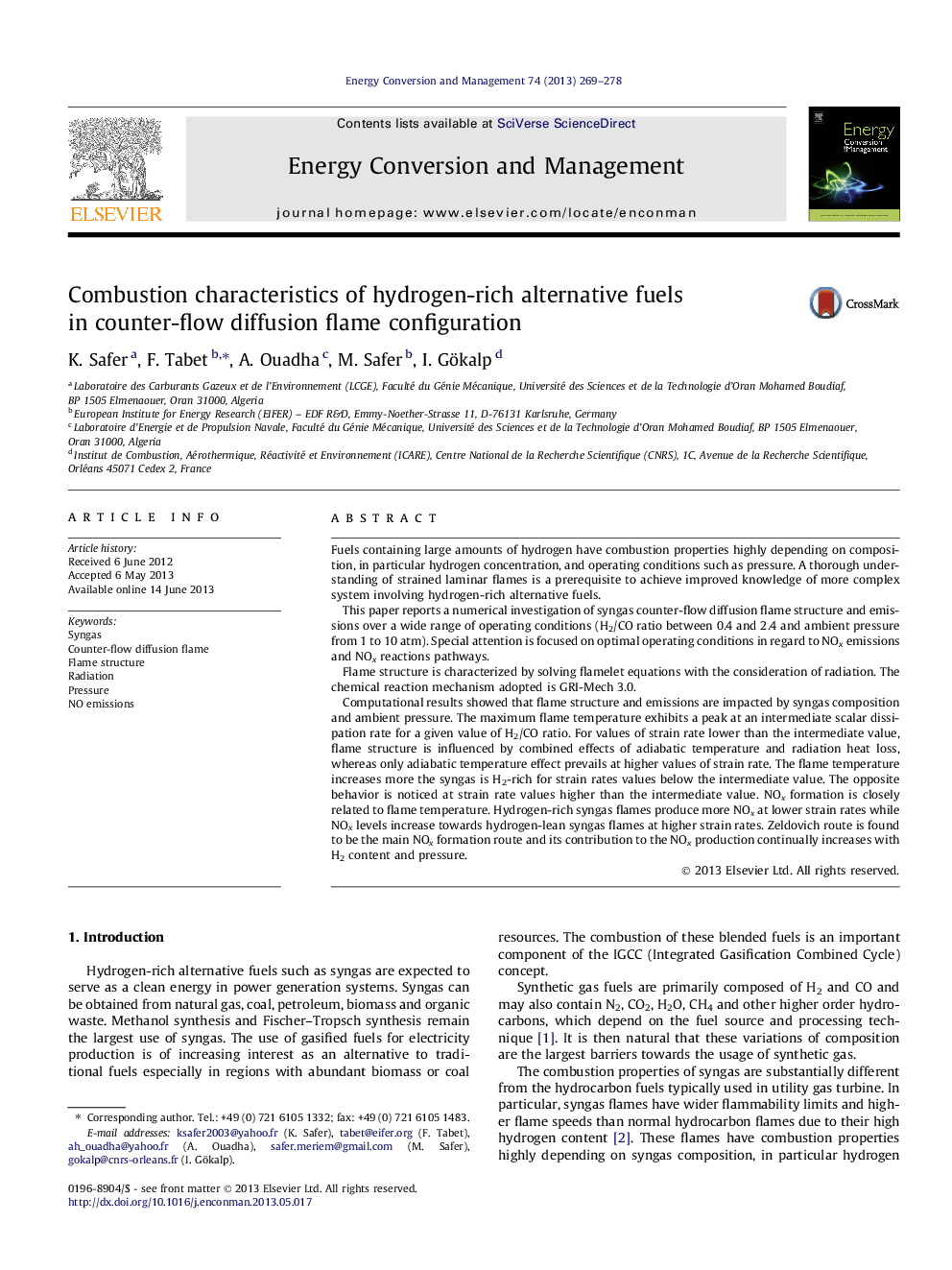| Article ID | Journal | Published Year | Pages | File Type |
|---|---|---|---|---|
| 7166741 | Energy Conversion and Management | 2013 | 10 Pages |
Abstract
Computational results showed that flame structure and emissions are impacted by syngas composition and ambient pressure. The maximum flame temperature exhibits a peak at an intermediate scalar dissipation rate for a given value of H2/CO ratio. For values of strain rate lower than the intermediate value, flame structure is influenced by combined effects of adiabatic temperature and radiation heat loss, whereas only adiabatic temperature effect prevails at higher values of strain rate. The flame temperature increases more the syngas is H2-rich for strain rates values below the intermediate value. The opposite behavior is noticed at strain rate values higher than the intermediate value. NOx formation is closely related to flame temperature. Hydrogen-rich syngas flames produce more NOx at lower strain rates while NOx levels increase towards hydrogen-lean syngas flames at higher strain rates. Zeldovich route is found to be the main NOx formation route and its contribution to the NOx production continually increases with H2 content and pressure.
Related Topics
Physical Sciences and Engineering
Energy
Energy (General)
Authors
K. Safer, F. Tabet, A. Ouadha, M. Safer, I. Gökalp,
